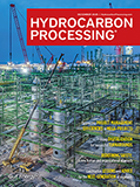Utilizing pilot plant operations for new chemical process technology development: A roadmap to scale up success and commercial plant safety
To demonstrate a new chemical process technology (flowsheet, raw materials, product) or improve an existing one, pilot plants are designed and operated at a scale between laboratory benchtop and commercial scale—often with specific goals for operability, product quality, economics and process safety. Identifying where potential safety, technical risks or uncertainties may occur is always a key goal in evaluating a new process.
IP: 10.1.103.123
This is a preview of our premium content. Thank you for your interest—please
log in or
subscribe to read the full article.
The Authors
Clark, B. - AVN Corp., South Charleston, West Virginia
Benjamin Clark is a Research Engineer at AVN Corp. He has 10 yr of experience in large-scale commercial manufacturing and pilot-scale process development, designing equipment for the safe handling of more than 10 highly hazardous chemicals. In his role, his focus is to design and operate processes to enable the commercialization of novel technologies that will be major industry processes in the future.
Nunley, M. - AVN Corp., South Charleston, West Virginia
Mark Nunley is a Principal Engineer at AVN Corp. He has 30 yr of experience in chemical process development and improvements at commercial, pilot and lab scale. In his role, he is customer-focused on economic and sustainable solutions through process analysis, improvement and development.
Phillips, G. - AVN Corp., South Charleston, West Virginia
George Phillips is a Principal Engineer at AVN Corp. He has 36 yr of experience in process design, project execution, R&D, manufacturing, pilot plant operation and technology licensing.
Related Articles
From the Archive









Comments